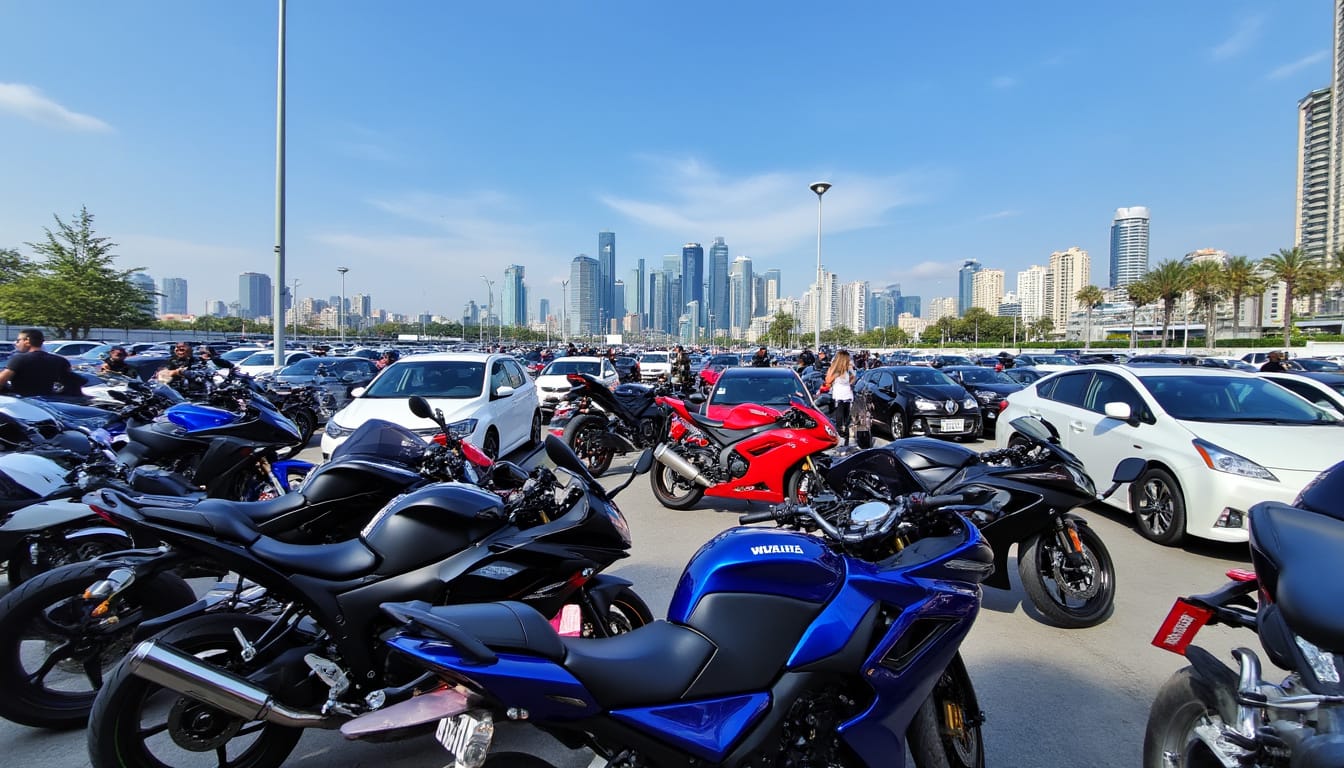The inter-lane circulation of motorcycles: a report after eight years of experimentation

Motorcycle lane splitting (CIF) has sparked numerous debates over the years, oscillating between hope and skepticism. After several years of experimentation, notably since February 2016, the question of legalizing this practice has become more pressing. Since 2024, significant changes have been made, marking important milestones for French motorcyclists.
Origins and legal framework of lane splitting
Lane splitting, or CIF, is a practice that allows motorcycle and scooter riders to maneuver between rows of vehicles, particularly at red lights and in traffic jams. This technique is often praised by motorcyclists as a solution to improve traffic flow and reduce congestion-related nuisances. However, its legal framework has long been vague and contentious.
Initially, the authorities launched experimental phases to assess the impacts of CIF on road safety. These were conducted in several French departments, such as Bouches-du-Rhône, Haute-Garonne, and Loire-Atlantique. Each experiment aimed to observe whether this practice had a positive effect on the safety of motorcyclists and traffic fluidity.
In 2024, following a temporary suspension of CIF due to preparations for the Olympic Games in Paris, it became imperative to take stock of the years of testing. Although the French Federation of Angry Motorcyclists lobbied for regulation, uncertainty remains regarding the legislative future of lane splitting.
Results of the initial experiments
The evaluation of the initial phases of experimentation, conducted in several waves, has allowed for the collection of interesting data. The counting of accidents involving motorcyclists practicing lane splitting was one of the key aspects of this study. The results indicated that, in certain experimental areas, the number of accidents did not significantly increase, which strengthened arguments in favor of its legalization.
The departments that recorded an increase in lane splitting practice also provided testimonies from users. Many motorcyclists claim that this method helps to ease traffic and allows them to avoid long waiting times in traffic jams.
- Circulation Zone: Highways and dual carriageways with a central reservation.
- Maximum speed in lane splitting: 50 km/h.
- Decongestion of lanes: Over 30% of motorcyclists practice CIF in the concerned areas.

The challenges of legalization
Despite encouraging results, several obstacles remain on the road to legalizing CIF. First, the fear of more severe accidents due to the proximity of motorcycles to often inattentive vehicles remains predominant. Authorities must assess whether the benefits in terms of traffic fluidity outweigh potential risks.
Furthermore, the existing legal framework remains complex and open to interpretation. In departments where CIF is allowed, drivers must adhere to certain strict rules to avoid potential penalties. For example, lane splitting is prohibited in adverse weather conditions, such as snow or ice.
Impact on road safety and motorcyclist testimonies
A sensitive aspect of lane splitting lies in safety issues. Motorcyclists, often more vulnerable than other road users, raise legitimate concerns. Preliminary figures from experimental campaigns have tried to bring clarity to this issue.
According to some studies, the practice of CIF would reduce the risk of accidents related to traffic jams by allowing motorcycles to circulate freely, away from potential collisions. Other studies, however, have revealed that some motorcyclists take excessive liberties, increasing the risk of dangers on the road.
Motorcyclist testimonies
Regular motorcycle users, such as owners of brands like Yamaha, Honda, and Kawasaki, often share their experiences of lane splitting.
- Luc, a 35-year-old motorcyclist, states: "CIF has really saved me during my daily commutes. I save valuable time and feel safer by avoiding heavy traffic jams."
- Céline, who rides a Ducati, adds: "I appreciate the speed of the practice, but I always pay attention to other users, as not everyone understands our presence between the lanes."
Departments involved in lane splitting
Currently, the departments participating in the CIF experiment are varied. In 14 departments of France, lane splitting is authorized as a test phase. This framework suggests that, in areas where positive results are observed, a shift towards more permanent legislation could be considered.
| Department | Status |
|---|---|
| Bouches-du-Rhône | Experimentation |
| Gironde | Experimentation |
| Loire-Atlantique | Experimentation |
| Nord | Experimentation |
| Paris | Experimentation |
This table illustrates the geographical diversity of the departments involved. Nevertheless, most of them are under observation to define how the practice can be better regulated. The need for a clear regulation remains crucial for the future of lane splitting.
Current state of legislation
Currently, the rules in force impose a speed limit of 50 km/h when moving between lanes. Moreover, a speed differential of 30 km/h compared to other road users is required. The persistent ambiguity surrounding the legislation still envelops CIF, creating uncertainty for drivers. Drawing on the experience accumulated through various experimental phases, it seems necessary to bring this practice towards regulation within the framework of the Highway Code.

Future perspectives for lane splitting
Discussions on the future of motorcycle lane splitting are among the priority concerns of motorcyclists and authorities. The results of the experiments will guide future legislation, but major questions remain, particularly regarding the inclusion of this practice in the Highway Code. Technological advancements in safety could also influence this decision.
Tailored solutions could emerge from the expectations of motorcyclists and observed practices on the ground. For example, many motorcyclists advocate for mandatory training for motorcycle riders on the use of lane splitting, thereby optimizing safety and understanding among all road users.
Training and Awareness of Users
To ensure the safe use of lane splitting, it is essential to raise awareness among motorcyclists and other road users. Here are some suggestions:
- Establish driving workshops on the practice of lane splitting.
- Promote awareness campaigns targeting motorists.
- Enhance cooperation between motorcyclists and drivers of motor vehicles.
These initiatives aim to encourage more responsible behavior on the road and to establish a climate of trust among all users. This could potentially reduce apprehensions related to lane splitting.
The role of motorcycle sector stakeholders
Brands such as BMW, Suzuki, KTM, Harley-Davidson, and Triumph play a crucial role in awareness strategy by integrating safety training and road safety advice into their offerings. These stakeholders can also contribute to establishing a regulatory framework by proposing safety technologies such as warning systems or advanced braking devices.
In terms of sustainable development, these brands also pay attention to ecological issues and the promotion of less polluting vehicles. An approach that, combined with lane splitting, could ultimately help address congestion issues while preserving user safety. Initiatives like these are essential to create a positive outlook around lane splitting and to support its integration into the French road landscape.
Conclusion on the uncertain future of lane splitting
Now, after nearly eight years of experimentation, perspectives on lane splitting remain fraught with uncertainties. The various stakeholders, including motorcyclists, authorities, and economic actors, must collaborate to shape a framework that guarantees safety and fluidity. The year 2025 could be decisive for the future of lane splitting and for its definitive inclusion in the Highway Code, as expectations remain high.
Leave a Reply


Articles relatifs